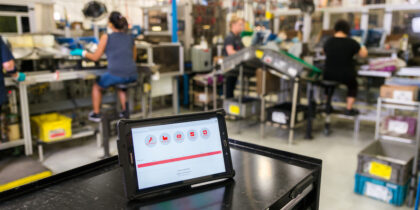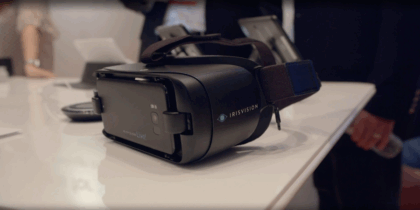While virtual reality has many exciting business applications, augmented reality may be technology that eventually replaces what we think of as computing today. Mobile augmented reality is touted as a technology that could revolutionize the world of work, as its ability to add a digital layer to the world around us can help improve workflow, boost productivity and cut costs.
Augmented reality utilizes a camera, sensors, like GPS, and digital image processing to recognize the world around us, and then uses that information to add a contextualized digital layer of information on top. We recently saw this technology baked directly into the camera on Samsung’s Galaxy S8 smartphone, allowing users to point their device at a real-world landmark and instantly receive information about it.
But it’s in the enterprise where augmented reality could have the biggest impact. Here are five questions companies should consider when looking to integrate mobile augmented reality in their workflow.
1. Do I really need to use AR?
According to the Bureau of Labor Statistics, productivity growth averaged just 0.5 percent from 2011 to 2016 — meaning weaker economic growth and even stagnant wages. Mobile augmented reality promises not only to make workers’ lives easier but also significantly boost productivity. As this study shows, using an AR-enabled tablet or smartphone, employees were able to assemble parts of a wing — which required over 50 steps to assemble nearly 30 different parts — 30 percent faster with a 90 percent improvement in quality, compared to those using a desktop computer.
Many companies are already taking advantage of the benefits of AR, and by using this technology in the right places, businesses can make significant improvements to productivity.
Use AI to Work Without Barriers
Learn how AI-powered devices enable the future of work. Download Now
2. What business objectives can AR address?
As well as having the ability to enhance productivity, augmented reality technology is a powerful tool to increase engagement with a brand. For example, Tiffany & Co.’s Engagement Ring Finder app boosts customer engagement by letting shoppers access custom filters that show what their ring looks like in different lighting conditions. This approach can be used by a wide variety of businesses to enhance personalization: Car salespeople can show customers their car in different colors and clothing stores can let shoppers use mobile AR in a number of different ways, such as to try on garments at home before buying.
Education and training companies can also leverage AR technology. Educational companies can use it to make their apps more engaging, allowing students to interact with the real world around them. For training, a well-designed AR app can provide a guiding hand for people in the medical, construction or engineering fields, all the while saving money and boosting productivity.
3. What augmented reality technology is available today?
AR is being deployed in a range of hardware today, but most widely on smartphones, where the technology is now being deeply integrated into the latest smartphones and tablets, such as Bixby Vision in the Galaxy S8 smartphone. Using these portable devices in combination with the augmented reality technology can boost the productivity and skills of employees in a wide range of industries, thanks to their flexibility.
4. How do I integrate AR into my workflow?
Companies are eager to ensure they are using the latest technology and not getting left behind when it comes to the cutting-edge hardware and software its competitors may be using. However, it is important to assess carefully how best to roll it out to your employee- or customer-facing apps.
To integrate AR into your workflow, you need to consider several variables:
- Is it going to be a seamless experience where employees can simply pick up and use the AR-enabled devices?
- Will it boost productivity or will tasks take longer because employees have to use the technology?
- Is it better to invest in hands-free hardware such as smartglasses or readily available technology like smartphones and tablets?
5. Where does the future of AR lie?
As with most technologies, development in the area of augmented reality is advancing rapidly. Mobile augmented reality is being improved with better sensors, more accurate cameras and faster digital image processing, helping improve the user experience. Augmented reality may even be replaced with mixed reality, a technology which allows users to not only see a digital layer of information in front of them but also manipulate that information using their hands.
With its ability to boost workflow and improve employee productivity, mobile augmented reality is quickly taking off in the enterprise. It’s important for businesses to keep an eye on this revolutionary technology in order to not be left behind.
Read more about trends that are contributing to the rise of the digital workforce, including augmented reality and the Internet of Things.







